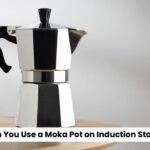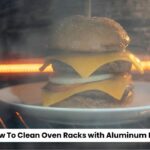Are you someone who enjoys whipping up culinary delights in the kitchen? If so, you’ve likely pondered the question: Can you use oven and stove at the same time to cook multiple dishes? Picture a bustling kitchen scene with pots bubbling on the stove and trays baking in the oven. The prospect seems efficient, doesn’t it? However, before you embark on your culinary adventure, it’s essential to understand the dynamics of your appliances and how they interact.
In this article, we’ll delve into the ins and outs of using your oven and stove simultaneously. From understanding the capabilities of your appliances to ensuring safety and optimal cooking results, we’ll navigate through the nuances so you can confidently multitask in the kitchen without sacrificing flavor or safety.
So, let’s dive in and uncover the secrets behind harnessing the power of both your oven and stove at the same time.
Table of Contents
Can You Use Oven and Stove at the Same Time?
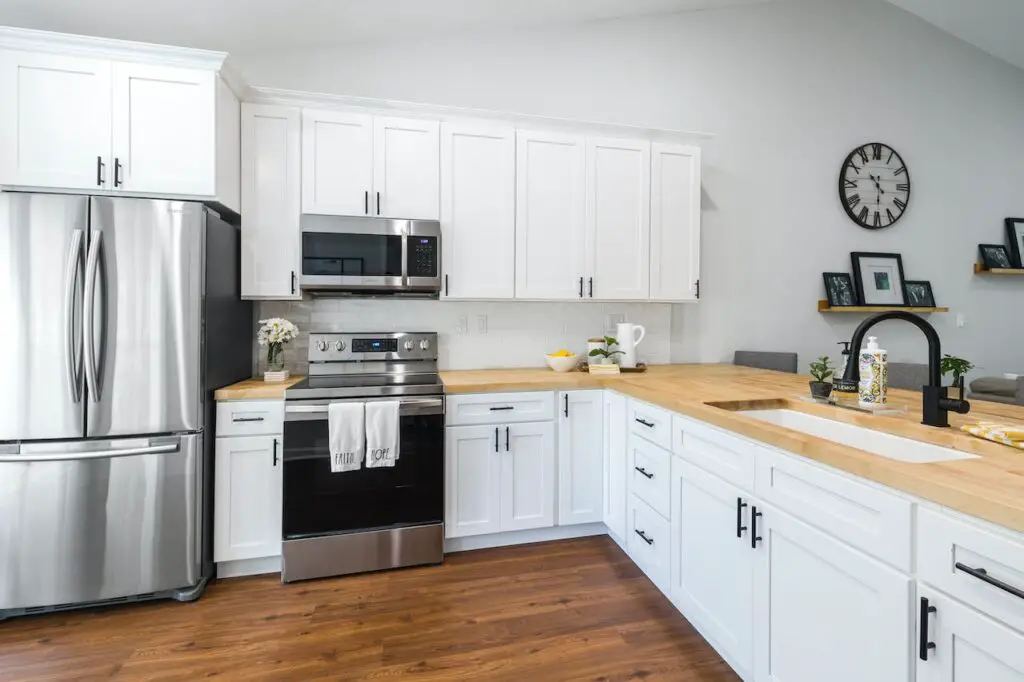
Imagine a bustling kitchen with savory aromas wafting through the air as pots simmer on the stove and dishes bake in the oven. Amidst this culinary symphony, a common question arises: can you use the oven and stove at the same time?
The answer, dear reader, is a resounding yes! Your kitchen appliances are designed to work harmoniously together, allowing you to whip up delicious meals with ease. Whether you’re roasting a chicken in the oven while sautéing vegetables on the stovetop or baking a cake while simmering a homemade sauce, utilizing both the oven and stove simultaneously is entirely feasible.
However, it’s essential to consider a few factors to ensure a smooth cooking experience. Firstly, be mindful of the space in your kitchen. Avoid overcrowding the stove and oven area to prevent any mishaps or accidents. Additionally, keep in mind the cooking times and temperatures required for each dish to avoid any conflicts.
Another consideration is ventilation. Cooking with both the oven and stove can generate a considerable amount of heat and steam. Proper ventilation, such as using an exhaust fan or opening windows, can help maintain a comfortable cooking environment and prevent your kitchen from becoming overly warm and humid.
Furthermore, it’s crucial to practice kitchen safety at all times. Keep flammable items, such as kitchen towels and oven mitts, away from heat sources, and never leave cooking unattended.
In short, using the oven and stove simultaneously is not only possible but often necessary for preparing elaborate meals efficiently. By exercising caution, planning ahead, and practicing proper kitchen safety, you can master the art of multitasking in the kitchen and delight your taste buds with culinary creations aplenty.
Is It Safe To Use Oven and Stove at the Same Time?
When it comes to cooking, the kitchen is like a stage where different appliances perform their roles to bring out the best in our culinary creations. The oven and stove are two essential players in this culinary theater. But is it safe to use them both at the same time?
Let’s break it down.
Firstly, both the oven and stove are designed with safety features to prevent mishaps. Modern appliances undergo rigorous testing to ensure they meet safety standards. So, in theory, using them simultaneously shouldn’t pose a significant risk.
However, there are a few factors to consider.
One is ventilation. Proper ventilation in the kitchen helps dissipate heat and gases produced during cooking. Using the oven and stove simultaneously can increase the temperature in the kitchen, especially if it’s a small space. Ensuring adequate airflow can help maintain a comfortable and safe cooking environment.
Another consideration is the electrical load. Using multiple appliances simultaneously can put a strain on your electrical system, especially if it’s an older one. It’s essential to ensure that your electrical circuits can handle the load to prevent overloading and potential hazards like short circuits or electrical fires.
Additionally, using both the oven and stove simultaneously may affect cooking times and results. For instance, if you’re baking delicate pastries in the oven while frying on the stovetop, you might need to adjust cooking times and temperatures to achieve the desired outcomes.
Overall, using the oven and stove at the same time is generally safe as long as you take the necessary precautions. Ensure proper ventilation, check your electrical system’s capacity, and be mindful of cooking times and temperatures.
By understanding these considerations and taking appropriate measures, you can enjoy the convenience of using both the oven and stove simultaneously while ensuring a safe cooking experience.
Can You Use the Stove While the Oven is Self-Cleaning?
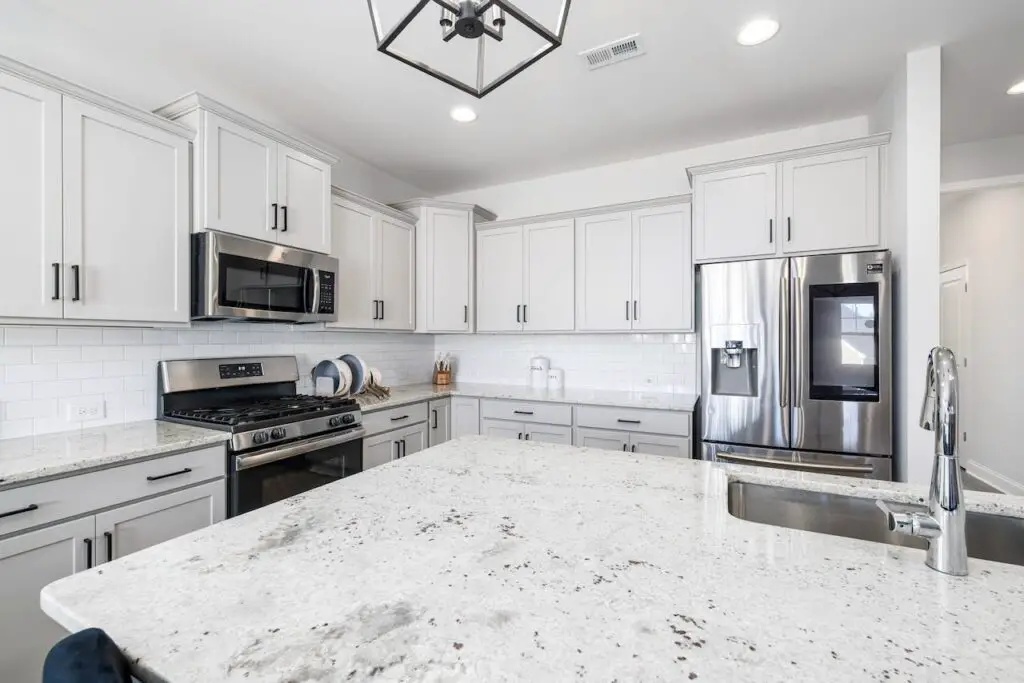
Yes, you can use the stove when the oven is self-cleaning, but with a few precautions. When your oven is in self-cleaning mode, it heats up to very high temperatures to burn off food residue and grease. This process can generate a lot of heat, so it’s important to be cautious.
Firstly, avoid placing anything flammable near the oven while it’s self-cleaning. Keep dish towels, paper towels, and other combustible materials away to prevent any accidents.
Secondly, be mindful of the heat radiating from the oven. While the oven door locks during the self-cleaning cycle to prevent accidents, the exterior of the oven can still become quite hot. Make sure children and pets stay away from the oven to avoid burns.
Additionally, consider the ventilation in your kitchen. The self-cleaning process can produce smoke and fumes from the burning off of food residue. Ensure that your kitchen is well-ventilated by opening windows or turning on the exhaust fan.
It’s also a good idea to avoid using the burners directly above the oven while it’s self-cleaning. The extreme heat from the self-cleaning cycle can affect the performance of the burners and potentially cause damage.
Overall, while it’s technically possible to use the stove while the oven is self-cleaning, it’s crucial to exercise caution and be mindful of the potential risks. By taking these precautions, you can safely multitask in the kitchen without any problems.
Is it Safe to Use an Oven Right After Cleaning?
Yes, it is safe to use an oven right after cleaning, but with caution. Cleaning an oven involves using chemicals or cleaning agents to remove grease, grime, and food residues. While these cleaners are effective at breaking down stubborn stains, they can leave behind residue or emit fumes that may be harmful if not properly removed.
After cleaning your oven, it’s essential to ensure that all cleaning agents have been thoroughly rinsed away. Any leftover residue can potentially contaminate your food or produce unpleasant odors when the oven is in use. Additionally, some cleaning products may release toxic fumes when exposed to high temperatures, which can be hazardous to your health.
Before using your oven after cleaning, take a moment to inspect it visually and smell for any lingering chemical odors. If you detect any strong smells or see residue, it’s best to wait until the oven is completely clean and free of any cleaning agents.
To expedite the process, you can turn on your oven to a low temperature for a short period to help evaporate any remaining moisture or odors. Opening windows or turning on ventilation fans can also help dissipate any lingering fumes and ensure a safe cooking environment.
Benefits of Having Oven and Stove Together:
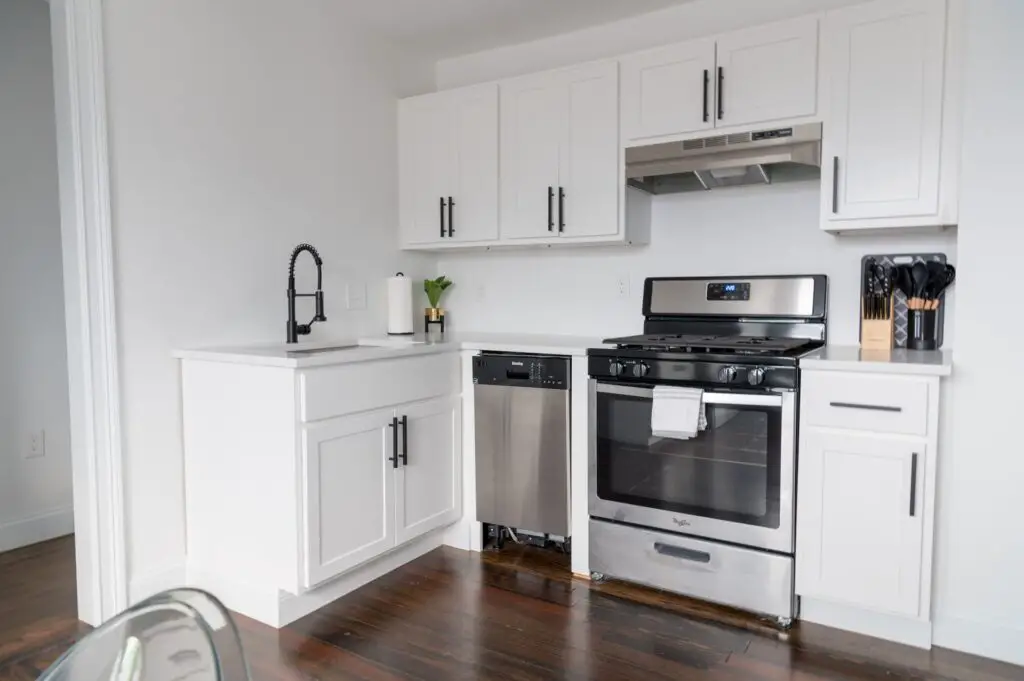
Imagine walking into your kitchen after a long day and feeling the warmth emanating from your oven and stove combined. It’s a comforting feeling, isn’t it? But beyond just the cozy ambiance, there are tangible benefits to having your oven and stove together in one unit.
First and foremost, the convenience factor cannot be overstated. When your oven and stove are integrated into a single unit, it streamlines your cooking process. No more shuffling between different appliances or trying to coordinate timings between the oven and the stove. Everything you need is right there, within arm’s reach.
Another advantage is the space-saving aspect. In today’s modern kitchens, maximizing space is key. By having your oven and stove combined, you free up valuable counter and floor space that separate appliances would otherwise take up. This could be especially beneficial in smaller kitchens or apartments where every square inch counts.
But perhaps the most significant benefit is efficiency. With a combined oven and stove, you can cook numerous dishes simultaneously without having to juggle different temperatures and cooking times. This not only saves you time but also energy, as you’re not constantly preheating separate appliances.
Moreover, integrated oven and stove units often come with advanced features and technology that enhance your cooking experience. From convection baking to precise temperature control, these features allow you to achieve professional-level results right in your own kitchen.
In addition to practical benefits, having your oven and stove together can also elevate the aesthetic appeal of your kitchen. Many integrated units boast sleek and modern designs that complement any kitchen decor, adding a touch of sophistication to your culinary space.
Is It Better To Have A Separate Stove and Oven?
Having a separate stove and oven in your kitchen can be a game-changer, especially if you enjoy cooking or baking frequently. Let’s dive into why this setup might be the ultimate kitchen dream for many.
First off, having a separate stove and oven allows for more flexibility in your cooking endeavors. Picture this: you’re preparing a feast for a dinner party. With a separate stove and oven, you can have multiple dishes going at once without any hassle. While your lasagna is baking in the oven, you can sauté veggies or simmer sauces on the stove without any interruption.
Another perk of having separate appliances is temperature control. Ovens and stoves often require different temperatures for various dishes. With separate units, you can easily adjust the temperature of each appliance according to your recipe’s requirements. This precise control can make a significant difference in the outcome of your culinary creations.
Moreover, having a separate stove and oven can enhance safety in the kitchen. Sometimes, when using a combination stove and oven unit, things can get cramped, leading to potential accidents. With separate appliances, you have more space to maneuver, reducing the risk of burns or spills.
Let’s not forget about convenience. If one appliance breaks down, you still have the other to rely on. This can be a lifesaver, especially when you’re in the middle of preparing a meal for guests or during the holiday season when the kitchen is bustling with activity.
Furthermore, from a design standpoint, separate stoves and ovens offer more flexibility in kitchen layout and design. You can opt for a sleek, modern look with separate built-in appliances or go for a more traditional range and oven setup. The choice is yours, depending on your personal style and kitchen layout.
In summary, while a combination stove and oven unit may suffice for some, having separate appliances offers a myriad of benefits. From increased flexibility and precise temperature control to enhanced safety and convenience, the advantages are clear. So, if you’re renovating your kitchen or in the market for new appliances, consider the perks of having a separate stove and oven—it might just elevate your culinary experience to new heights.
Tips For Using Oven and Stove at the Same Time:
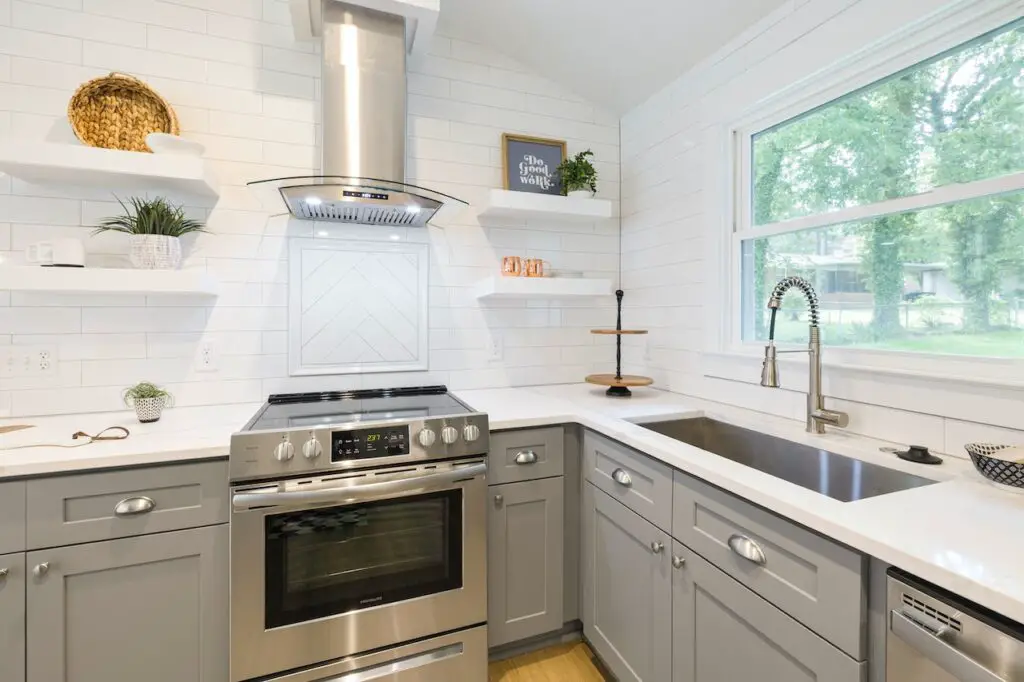
Now, let’s dive into the art of using your oven and stove simultaneously like a culinary maestro. It’s a delicate balance, akin to conducting a symphony in your kitchen. But fear not, for with a few savvy tips, you can orchestrate a harmonious culinary masterpiece without breaking a sweat.
First and foremost, consider the power dynamics. Your oven and stove each have their own unique strengths and quirks. Understanding these nuances is key to maximizing their potential. For instance, the oven provides consistent, all-around heat perfect for roasting veggies or baking a delectable dessert. Meanwhile, the stove offers direct, adjustable heat ideal for sautéing, frying, or simmering sauces to perfection.
One golden rule: prioritize timing and temperature. Start by preheating your oven to the wanted temperature while you prep ingredients on the stove. This multitasking approach ensures that both appliances are ready to roll when you need them. Additionally, consider utilizing timers or alarms to keep track of cooking times and prevent any culinary mishaps.
Next, strategize your cooking methods. Opt for recipes that allow for seamless integration of both oven and stove. For example, while your main dish roasts in the oven, utilize stovetop space to prepare complementary side dishes or sauces. This dual-action approach not only saves time but also adds depth and flavor to your culinary creations.
The organization is your best friend in the kitchen. Before you begin, gather all necessary ingredients and utensils within arm’s reach. This prevents frantic scrambling mid-cook and allows you to focus on the task at hand. Keep a clean workspace to avoid clutter and minimize the risk of accidents.
Don’t forget about ventilation. Cooking with both the oven and stove simultaneously could generate a significant amount of heat and steam. Ensure proper airflow by using exhaust fans or opening windows to maintain a comfortable cooking environment.
Finally, embrace the art of improvisation. Cooking is as much about intuition as it is about following recipes to the letter. Don’t be afraid to experiment with flavors, textures, and cooking techniques. After all, some of the greatest culinary innovations were born out of spontaneous creativity.
Conclusion:
The question of whether you can use the oven and stove simultaneously isn’t just about convenience; it’s about safety and efficiency in the kitchen. As we’ve explored, while it’s technically possible to use both appliances at the same time, it’s essential to proceed with caution.
Understanding your appliance’s capacity, ensuring proper ventilation, and being vigilant about potential hazards are all critical elements of safely multitasking in the kitchen. By following these guidelines and using common sense, you can harness the full potential of your kitchen without compromising safety or sacrificing the quality of your culinary creations.
So, next time you’re planning a meal that requires both the oven and stove, remember to approach the task with care and enjoy the process of cooking up something delicious.
